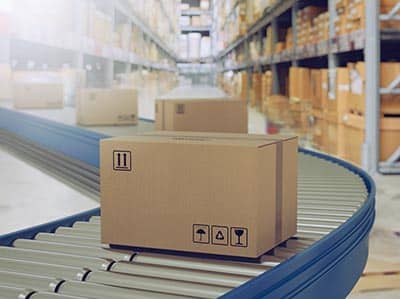Packaging is an integral part of every business. Good packaging can help you build your brand and make customers want to buy from you again. But what is it all about? And how do you start your own packaging business? We’ve got all the answers for you in this handy guide!
Let’s get the ball rolling…
What does good packaging mean?
Good packaging is effective, efficient, and economical. It’s safe, secure, convenient, and easy to use. It’s environmentally friendly as well as attractive and appealing. In short, you need good packaging to sell your product or service efficiently!
Why packaging?
Packaging has a ton of benefits for any business—whether as a startup or an existing business that needs rebranding. This gives it one of the most sort-after business models across the globe. So here’s why any company would need packaging.
Packaging is a marketing tool to differentiate your product or brand and its message. It can also be used as an opportunity to express what you’re trying to say about your business through the packaging design itself.
Packaging is more than just a container; it’s an essential part of any business’s marketing strategy because it allows you the chance to communicate with consumers and build trust with them.
How do I start my business packaging?
You’re probably wondering how to start your business packaging. There are many things to consider, but it’s not impossible! There are a couple of processes to consider, but here is the most important.
Develop a plan!!!
Before you buy anything for your packaging company, consider what kind of business model would work best for you and your brand.
But to get started, you’ll need to ask yourself the following questions.
Do you want to sell individual items? Are there certain products that would make sense as part of a set? What other services could complement the offerings (like shipping)?
What are the 3 types of packaging?
Here are the types of packaging:
Product Packaging
This includes boxes, jars, bottles, and cans. It’s also called retail packaging – what you see when you buy something in a store or on Amazon (or another online retailer).
Industrial Packaging
This includes boxes for shipping products or components within a factory environment; sometimes, these are used as temporary housing for products during transport between locations or production lines.
Industrial Machinery
Industrial machinery requires specialized machinery parts made from high-strength materials like titanium alloys that can withstand extreme conditions such as high temperatures and pressure loads without breaking down under stress conditions.
Custom Packaging for Business
Custom packaging is essential for brand recognition, product differentiation, and marketing. It’s also a vital part of sales and customer satisfaction.
Custom packaging can help you retain customers by providing them with a unique experience that sets your business apart from the competition.
Custom packaging is also an effective way to promote your brand and increase sales. By creating a unique package for your product, you can make it stand out from the crowd of generic products on store shelves. This will help drive brand loyalty among customers who want something that sets them apart.
What are the 7 functions of packaging?
- Protection: Packaging helps protect the product from damage and reduces its weight.
- Appearance: The look and feel of packaging can make or break a brand’s image. Packaging is used to create an appealing presentation that leaves customers wanting more.
- Ease of Use: Consumers want products that are easy to use at home, in the office, or on the go—packaging plays an important role here by making it easier for consumers to open, take out and use their favorite products without any hassle (or mess).
- Storage: Products must be stored somewhere until they’re ready for use. But this is also where packaging comes into play because it protects against moisture loss while keeping everything organized, so you don’t have boxes everywhere!
- Transportability: When transporting goods across distances (such as overseas), it’s crucial that your products arrive safely without being damaged during transit; this means something as simple as bubble wrap could mean the difference between life-saving medical supplies reaching those who need them most quickly.”
- Security: Packaging helps prevent theft since reselling products without packaging is difficult. Also, some types of packaging have security features that make them more difficult to open without the proper tools (such as childproof caps).
- Convenience: Packaging makes life easier by making products easy to open and use, so consumers don’t have to waste their time or energy trying to do it themselves. This also helps companies stay competitive (since they can offer their customers the convenience of not having to clean up after themselves).
Packaging for Business Cards
If you send out business cards, they must have the right size and color. The size of your business card depends on how several individuals will see them every day. However, if you’re starting with a small operation, consider using a standard 8 x 11 inch (20 x 28 cm). This will work well for most businesses. Basically, it’s large enough so that no one will miss seeing it when they walk by your desk or office space but not so big that people feel overwhelmed by its sheer size.
On the other hand, choose a color scheme that matches the overall look of your company website or other marketing materials.
This makes it easier for potential customers and clients to recognize their product from afar without having any specific memory attached per se (such as “Oh yeah! That’s what I bought last week!”).
You should also make sure there isn’t anything distracting about either side; for example, using several variations of your logo. This is because those tend to distract from what matters most: getting information about what services are offered at XYZ Corp.”
What are the characteristics of good packaging?
- It must be attractive. You want your customers to want to open your packs or containers. But while trying to make it attractive, ensure you avoid lots of colors or graphics. This may lead them to think it won’t be able to hold up under regular use, which could lead them back to their local grocery store instead of yours!
- It must be informative. Whether you’re selling vitamins or shoes (or both), your product needs an explanation and a picture for potential buyers who aren’t familiar with those items. You want to make them feel comfortable purchasing without seeing it firsthand.
What are the benefits of packaging?
- Packaging helps sell products, protect them from damage and improve their appearance.
- It helps to promote your brand or product by communicating with the customer in the most efficient way possible.
- Packaging can reduce costs by reducing waste associated with transporting items worldwide through customs procedures at ports of entry into different countries. This is because it’s easier for customers to identify which type of product they have ordered when it’s appropriately packaged than when there are no labels whatsoever (or very little information about its contents).
- It can be used to promote your brand and differentiate your product from others, but it also communicates the value of what you’re selling.
For example: if you are selling a food product, packaging will help customers understand what they are buying and how much better it is than competitors’ products.
- It helps you communicate the value of your product. If you are selling a food product, packaging will help customers understand what they are buying and how much better it is than competitors’ products.
7 Ingenious Small Business Packaging Ideas
External Packaging Customizations
Consider your shipping container to be a storefront for your online firm. Like a spectacular window display, a well-designed shipping box will leave a positive first impression on your customers and inform them how they should see your business.
Here are the top three types of shipping container adaptations, with possibilities for every budget:
Completely Customized Packaging
Price range: $5-$40 per customized box (depending on size and level of customisation).
Fully customized packages are boxes, mailers, or other forms of shipping containers that are created to represent your business on the inside, outside, or both. These shipping materials go beyond simply including a brand and offer a more immersive experience.
This packaging is excellent for generating brand exposure through social media shares and unpacking videos.
Unboxing video, which involves shoppers filming or photographing the act of unpacking new products, frequently relies on entirely customized packaging with distinct aspects that express a brand.
Printed Stock Packaging
Costs between $1.25 to $20 per piece (depending on size and level of customization).
Another small business packaging concept with a personal touch is printed stock boxes. These boxes take a standard box (or other shipping containers) and customize it with your brand on the outside. This form of personalization is an excellent approach to boost your brand and increase recognition without incurring significant costs.
For this printed stock packaging, make sure your brand is prominently displayed—right-side-up on the top or front of the box. Also, be sure you use a dark enough ink to generate contrast for optimum visibility.
If you’re serious about creating a distinctive brand, try using a logo design platform to have access to logo generators, logo templates, and editing tools—or hire an expert to create an affordable custom logo.
Exterior Logo Stickers Cost
6 cents to $7 per sticker (depending on size and level of personalization).
Logo stickers can be quickly and economically applied to the exterior of your shipping materials to offer a touch of individuality.
This is the most cost-effective solution for outside branding, and once the stickers and boxes are acquired, assembly can be completed swiftly in-house. Exterior logo stickers also make it simple to mark any sort of shipping container, making them ideal for organizations that employ a range of box sizes or suppliers for shipping materials.
Most third-party fulfillment centers have generic shipping boxes and can apply bespoke stickers throughout the order fulfillment process.
Internal Packaging Modifications
Add imaginative unique touches to the inside of your packages as another small company packaging concept. This can include bespoke labels or tags, branded empty fill such as tissue paper, or unique packaging for your products. It’s another chance to personalize your unboxing experience, raise brand awareness, and improve your offers.
Here are some innovative methods to fill your packages and give a personalized touch to your brand experience:
Thank-You Cards or Notes
Prices range from 5 cents to $1 per card, depending on modifications and stationary quality.
Including a handwritten thank you letter, putting your name on a preprinted card, or adding a promo voucher for your shopper’s next purchase is a simple and inexpensive way to personalize your small business packaging.
Cards and notes provide another opportunity for customers to interact with your company and help people remember your brand the next time they purchase. They also add a personal touch to ecommerce orders, which helps to establish an emotional connection.
Stickers or Tags With Your Company’s Logo
Prices range from 10 cents to $2 per piece (depending on material and size).
Including a custom logo tag or sticker with your orders is an inexpensive method to convey your brand.
Custom tags are typically affixed to garments and tiny objects such as cheap jewelry, whereas custom stickers are placed on the outside of generic product packaging.
Tissue Paper and Inside Packaging Are Optional
Prices range from 2 cents to $4 per order (depending on material and size).
Wrapping the individual products within your packages is another method to boost your product packaging and give a personalized touch. This demonstrates to clients that you cared about their order and that their goods are essential and valued. This level of detail distinguishes your business and provides an additional option to include branding through unique materials.
Consider wrapping clothing in tissue paper, glassware in sturdy boxes, and jewels in compact, cushioned containers. Some items require additional protection, while others simply look better when wrapped.
Miniature Gifts or Samples
Nothing has a greater impact than freebies. Including a product sample or tiny trinket as a present for your consumers can boost overall satisfaction and provide an excellent opportunity to push further branding throughout your packaging.
Product samples allow customers to learn more about your offers, which increases retention and basket size. Simple presents (such as decals, koozies, or keychains) can be personalized with your logo, transforming customers into brand ambassadors wherever they go. Furthermore, gifts like these foster a sense of value and inspire a brand engagement.
Conclusion
Creative packaging enhances your brand’s image and increases customer recognition. While custom small company packing is more expensive than standard shipping materials, it is an important aspect of building a strong brand and providing a great client experience. It can help personalize an otherwise impersonal ecommerce purchasing experience. Thanks to the vast range of custom boxes and packaging materials, you can give your orders a branded experience from the inside out, no matter what your budget is.
References
- www.entrepreneur.com – All you Need to Know About Packaging
- www.ecwid.com – Everything You Need To Know About Packaging
- thediamondlab.org – Packaging Ideas For Your Small Business: All You Need To Know
- 5 Reasons To Use BOPP Packaging Bags For Your Business
- Want to Launch an eCommerce Food Business?: Here are Some Tips to Consider
- REPUTATION MANAGEMENT SOFTWARE: Best Reputation Management Software for Business
- The Five Reasons Your Company Needs Custom Packaging
- COSMETIC RETAIL BUSINESS: Startup Guide & Tips






